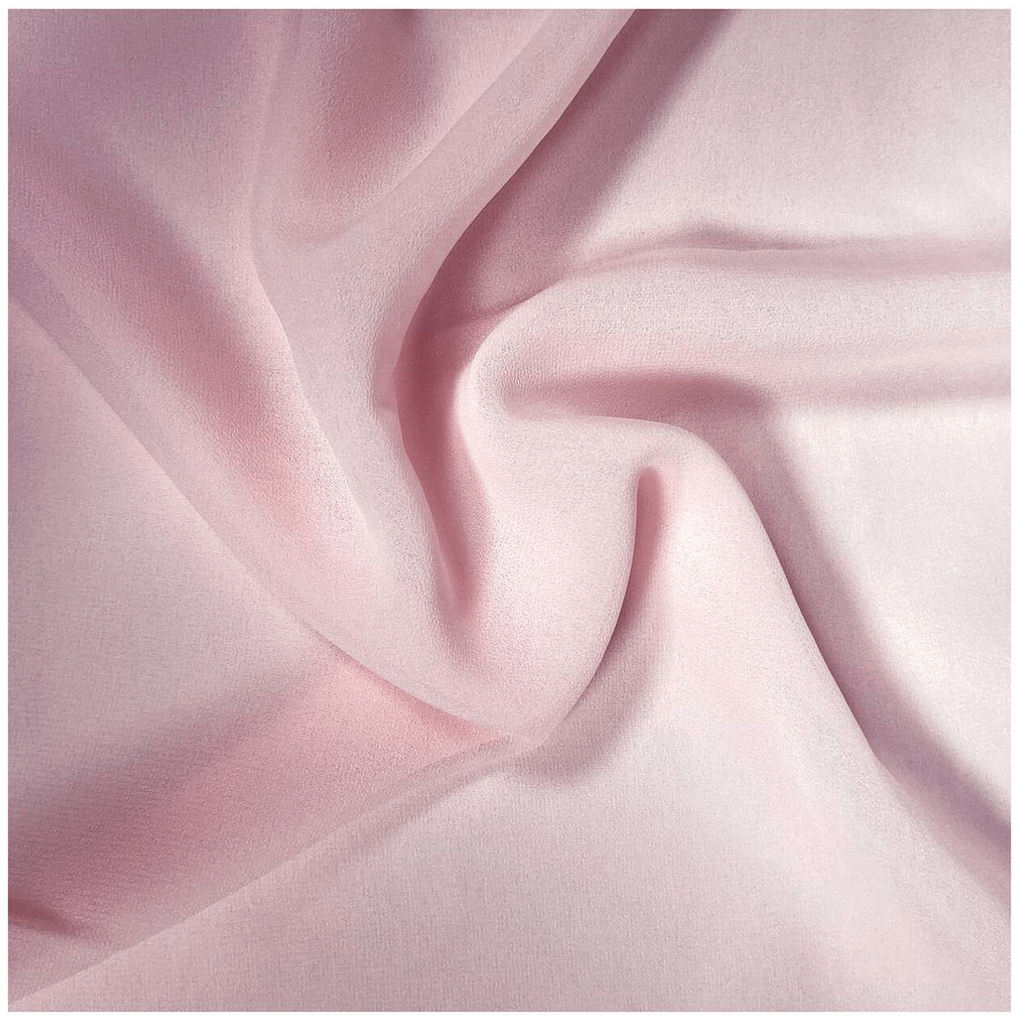A Deep Dive into Georgette Fabric
If you’re a fan of the fashion world or have a keen interest in textiles, you must be familiar with the term ‘Georgette’. However, you may not know the fascinating story and intricate process behind its creation. This lightweight, sheer, and subtly textured fabric has become a mainstay in the fashion industry. In this post, we’ll take a behind-the-scenes look at Georgette fabric, delving into its history, production process, different types, and how it’s being used in the fashion world.
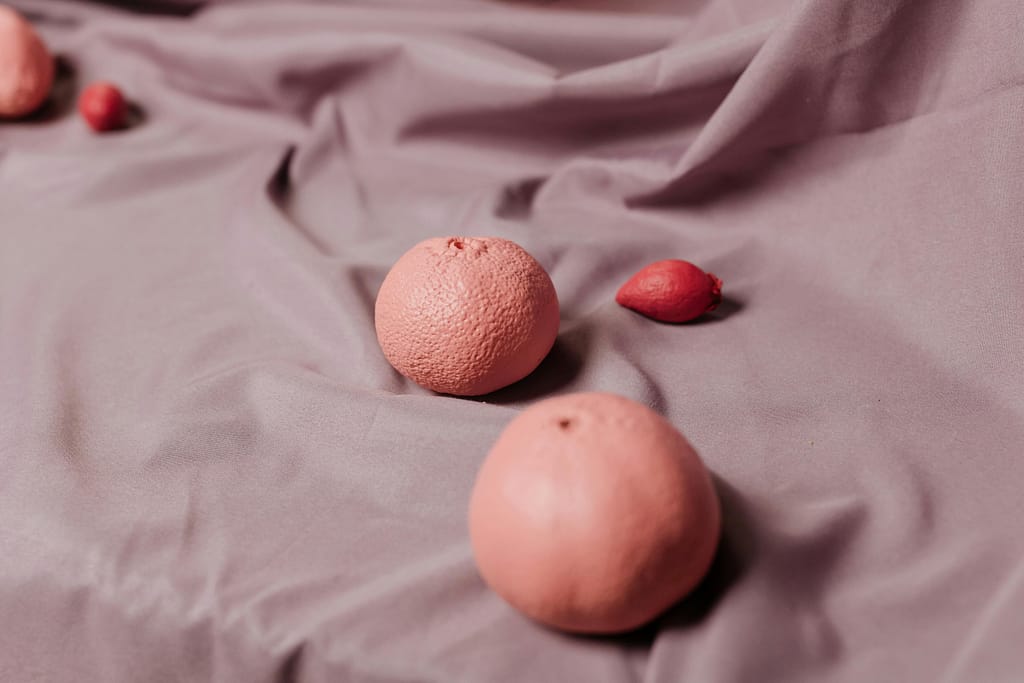
What is Georgette Fabric?
In the sartorial sphere, Georgette is something of a starlet. This light-as-air, translucent fabric is coveted for its peculiar texture, evoking an aesthetic that is both elegant and inviting. The fabric takes its name from a French dressmaker of the 20th century, Madame Georgette de la Plante, and has since evolved into a crucial element of fashion design.
At the heart of Georgette’s allure lies its peculiar crinkly surface. Achieved via a loose or tight weave, this trait bestows a unique charm upon the fabric, setting it apart from its contemporaries. Its creation involves the use of silk or synthetic yarns like polyester, resulting in a fabric that is as robust as it is beautiful.
A defining quality of Georgette is its spring-like nature, which lends itself perfectly to drapery. This attribute enables designers to fashion airy, romantic ensembles that move with a grace and fluidity that’s hard to achieve with other fabrics. Hence, Georgette is often the fabric of choice when creating evening wear, flowing blouses, chic scarves and stunning dresses.
An exploration of Georgette’s qualities and uses makes it clear why this fabric is such a favourite in the fashion industry. Its unique texture, combined with its lightweight and resilient nature, allows for an impressive range of applications. From high-end couture to everyday wear, Georgette is a fabric that truly has it all.
The Origin and Making of Georgette
Dating back to the early 1900s, Georgette was first unveiled to the fashion scene by none other than Madame Georgette de la Plante. A product of artistry and craftsmanship, this luxurious fabric was initially fashioned from silk. The unique crinkly texture that has become synonymous with Georgette wasn’t a fortuitous accident, rather, it was cleverly engineered through the use of highly twisted yarns.
To bring Georgette’s unique texture to life, a meticulous process is employed. This involves alternately using S and Z twist yarns in both warp and weft. The art of high-twist weaving gives the fabric its characteristic resilience and delightful bounce, a quality that has entranced fashionistas and designers alike.
Fast forward to the present, and the creation of Georgette has undergone a transformation. Silk is no longer the sole raw material. Now, synthetic fibres like polyester and rayon have entered the mix, presenting a more cost-effective alternative to the more expensive silk. This evolution has made Georgette accessible to a wider audience, amplifying its popularity in the world of fashion. Despite the changes in materials, the classic crinkly texture and distinctive feel of Georgette have stood the test of time. Whether silk or synthetic, Georgette remains a fabric steeped in a rich history and cherished for its timeless appeal.
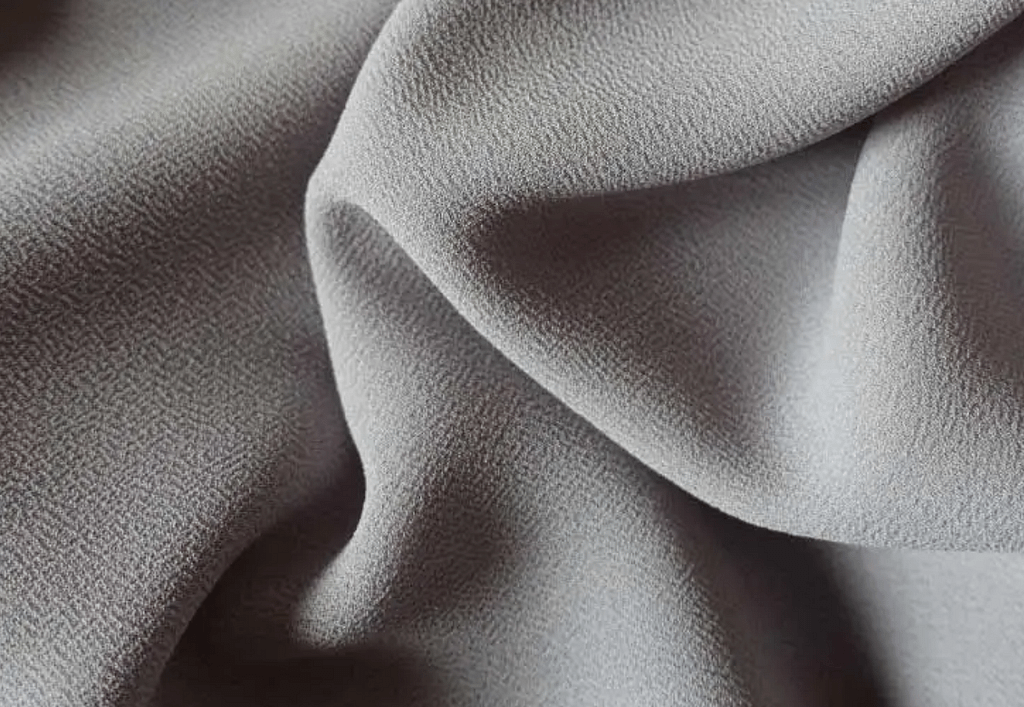
The Types of Georgette
When it comes to Georgette, variety is the name of the game. This fabric manifests in an array of styles, each carrying its distinct charm and function. At the apex of luxury sits pure silk Georgette, with its soft drape and sumptuous feel. However, such opulence comes with a price tag and a need for gentle care.
Enter synthetic Georgette, a robust and budget-friendly version, predominantly fashioned out of polyester or rayon. This alternative retains the hallmark crinkly texture, ensuring style doesn’t take a backseat.
For those seeking a touch of glamour, satin Georgette caters to that demand. Its surface has a sheen that subtly catches the light, making it a popular choice for evening wear.
Next in line is double Georgette. Its thickness is slightly elevated compared to its counterparts, providing a degree of warmth and coverage. This makes it a go-to choice for those brisk autumn evenings or cool spring days.
Lastly, we have embroidered Georgette. This type serves as a canvas for stunningly intricate patterns and designs, enhancing the fabric’s allure. Each thread of embroidery breathes life into the Georgette, making it more than just a fabric but a piece of art.
So, whether you desire luxury, affordability, shine, thickness, or artistry, there’s a type of Georgette for every whim and fancy.
Georgette in Fashion: Uses and Applications
Georgette, with its charismatic charm, has woven its way into the heart of fashion, carving a distinctive niche for itself. Designers can’t seem to get enough of this fabric, thanks to its fluid drape, gentle stretch and the unique textured finish it lends to garments.
When it comes to crafting apparel, Georgette is a stalwart. Its lightweight and airy feel make it a darling of designers, particularly for layered ensembles. Not only does this make a statement, but it also lends a feel of romanticism to the design.
Georgette’s flexibility does not end at dresses. This versatile fabric extends itself to creating blouses that carry a certain whimsical charm. With sarees, it holds a pivotal place, turning heads with its elegance and fluidity. Scarves too, made from Georgette, add a touch of chic sophistication to any outfit.
The fabric’s ability to beautifully hold onto colours and patterns further adds to its attractiveness. This trait makes Georgette a canvas for various prints and patterns, allowing designers to experiment and create vibrant and dynamic pieces that are sure to leave a lasting impression.
Evening gowns of Georgette are a sight to behold. The gentle swish and sway of the fabric impart a captivating charm, turning the wearer into a cynosure of all eyes.
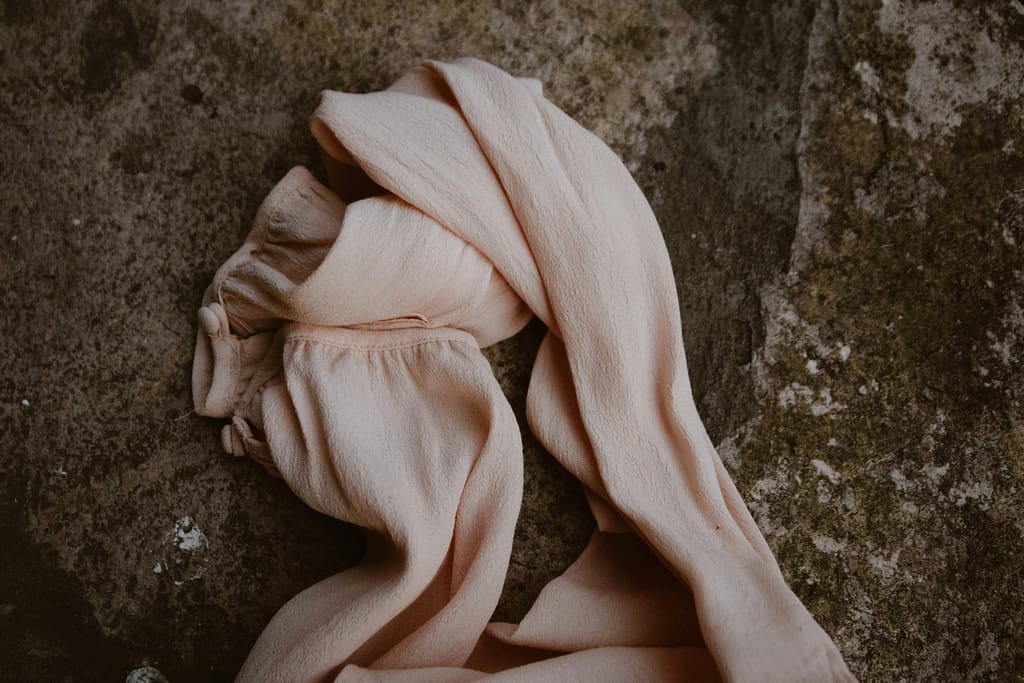
How to Care for Georgette
While the resilience of Georgette makes it well-suited to frequent use, it still requires a tender touch to ensure its longevity. Although quite robust, this stunning fabric benefits from thoughtful care, to keep it looking fresh and fabulous. Handwashing is the method of choice, preferably in cool water using a delicate detergent. Resist the temptation to wring or twist your Georgette item, as this could potentially damage the texture. A safer option is to roll it gently in a towel, pressing lightly to eliminate any excess water. When it comes to ironing, keep the heat low and always place a protective cloth between the iron and your garment to avert any accidental burns. For those pieces of Georgette that showcase intricate detailing, such as beadwork or embroidery, it’s wise to enlist the services of a professional dry cleaner. That way, you can ensure that every thread and bead stays precisely where it was meant to be. Taking good care of your Georgette garments not only prolongs their life but also helps to maintain the exquisite texture and soft drape that makes this fabric such a cherished part of your wardrobe.
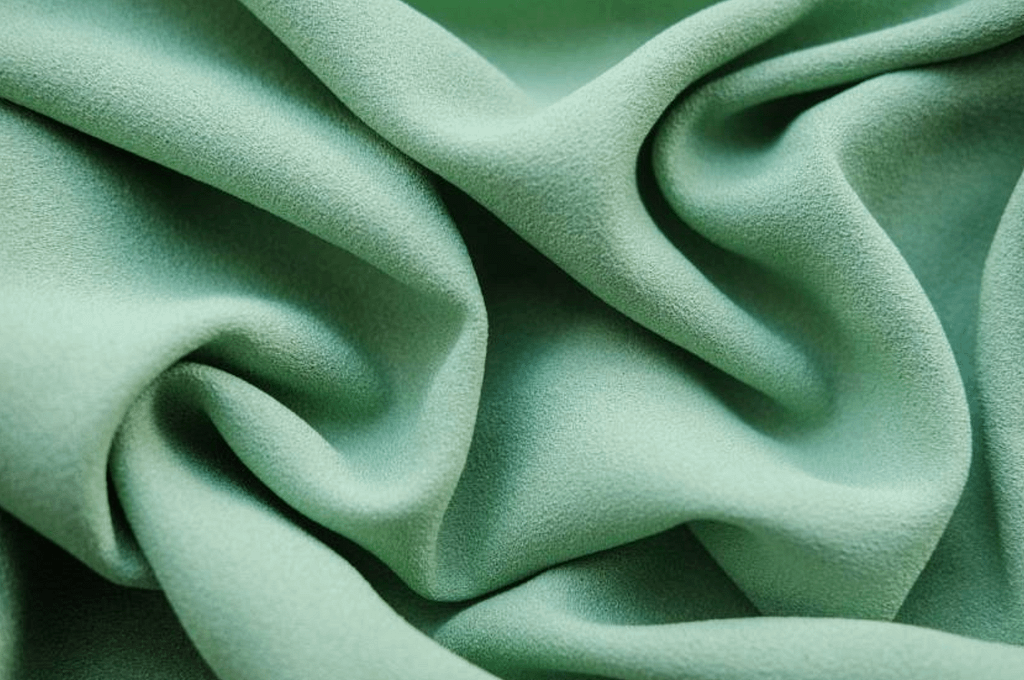
The Future of Georgette in Fashion
Georgette is not a fabric that merely rests on its laurels. Quite the opposite, it continues to evolve, pushing its boundaries to keep pace with the dynamic landscape of the fashion industry. Sartorial savants are constantly pushing the envelope, combining Georgette with other materials, and exploring new dyeing and printing methods to birth designs that are as novel as they are stunning.
The captivating charm of Georgette, combined with the rise of experimental and daring fashion choices, promises a future where this fabric continues to reinvent itself. Imagine Georgette pieces with mesmerising holographic prints or garments where Georgette seamlessly merges with unconventional materials like metallics or neoprene. The possibilities are indeed limitless.
Additionally, with the green revolution sweeping across the fashion world, Georgette too, is donning an eco-friendly avatar. The focus is on exploring more sustainable ways of producing this beloved fabric. The use of organic silk or repurposed synthetic fibres is increasingly gaining traction. This not only underlines a commitment to protect the planet but also opens up avenues for new types of Georgette – ones that are as kind to the environment as they are beautiful.
In a nutshell, the journey of Georgette through the corridors of fashion is far from over. Its future appears to be as textured and rich as the fabric itself, holding great promise for lovers of this versatile material. It’s clear that Georgette will continue to shine on the ramp, in our wardrobes, and in our hearts.
